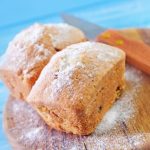Are you looking to enhance your cake decorating skills? Learning how to improve cake decorating skills is a valuable asset for any baking enthusiast or professional confectioner. Whether you are just starting or have been decorating cakes for years, there are always new techniques and styles to master. From understanding the basics to troubleshooting common issues, this article will guide you through the process of honing your cake decorating abilities.
Cake Decorating is more than just a culinary skill; it is an art form that allows individuals to express their creativity and imagination through delightful edible creations. With the right tools, ingredients, and techniques, anyone can create stunning designs that not only look beautiful but taste amazing too.
In this article, we will delve into the fundamentals of cake decorating, providing valuable tips and tricks for perfecting buttercream and royal icing decorations, exploring color theory and using fondant for intricate designs, enhancing texture and dimension in your creations, as well as troubleshooting common decorating issues. Whether you are a beginner looking to learn the basics or an experienced decorator wanting to refine your expertise – this comprehensive guide has something for everyone.
So let’s get started on the exciting journey of improving your cake decorating skills.
Understanding the Basics
Cake decorating is not only a creative and enjoyable hobby, but it also allows individuals to showcase their talent in the kitchen. However, to master the art of cake decorating, it is essential to understand the basic tools and ingredients needed for this craft.
Essential Tools for Cake Decorating
A few must-have tools for cake decorating include piping bags, couplers, piping tips, offset spatulas, cake turntables, and a good quality bench scraper. Piping bags come in disposable or reusable options, while couplers allow decorators to easily switch between different tips without having to change the bag. Piping tips come in various shapes and sizes, each serving a different purpose in creating intricate designs.
An offset spatula is perfect for spreading frosting smoothly on cakes, while a cake turntable helps achieve an even application of frosting all around the cake. Lastly, a bench scraper is useful for achieving clean and professional-looking edges on cakes.
Key Ingredients for Cake Decorating
The main ingredients required for cake decorating include buttercream icing or royal icing for piping decorations and fondant for creating more elaborate designs. Buttercream can be flavored and colored according to preference, making it versatile for different design ideas. Royal icing dries hard and is often used for delicate details such as lacework or intricate patterns. Fondant provides a smooth and polished finish to cakes and can be shaped into various shapes such as flowers or figurines.
Additional Supplies
In addition to the essential tools and ingredients mentioned above, decorators may also require food coloring gels or powders to achieve vibrant colors in their designs. Edible decorations such as sprinkles, edible glitter, or edible pearls can also add a touch of sparkle to cakes. It is important to use high-quality food coloring products to avoid altering the taste and consistency of icings or fondant.
Understanding these basic tools and ingredients will provide a solid foundation that will enhance your overall cake decorating skills.
Mastering the Art of Piping
Mastering the technique of piping is essential for anyone looking to improve their cake decorating skills. Whether using buttercream or royal icing, knowing the right tips and techniques can make a significant difference in the outcome of your cake decorations.
Choosing the Right Piping Tips and Bags
When it comes to piping, having the right tools can make all the difference. Different piping tips create different designs, so it’s important to have a variety of tips on hand. Additionally, investing in quality piping bags that are sturdy and easy to handle can greatly improve your piping experience.
Consistency Is Key
One of the most important factors in perfecting buttercream and royal icing decorations is achieving the right consistency. Buttercream should be smooth and easily spreadable, while royal icing should be thick enough to hold its shape when piped. Practice getting the consistency just right to ensure your decorations come out as intended.
Techniques for Precision and Detail
Whether you’re creating intricate designs with buttercream or delicate details with royal icing, mastering different piping techniques is crucial. Learning how to control pressure when piping, creating smooth lines, and adding dimension to your decorations are all important skills to develop in order to take your cake decorating to the next level. Taking the time to practice these techniques will pay off in achieving professional-looking cake decorations.
By understanding these tips and techniques for mastering the art of piping with both buttercream and royal icing, you can enhance your cake decorating skills and create stunning designs that will impress anyone who sees (and tastes) your delicious creations.
The Importance of Color
Color plays a crucial role in cake decorating, as it can greatly impact the overall look and feel of a cake. Understanding color theory and how to effectively use it can take your cake decorating skills to the next level. Here are some key pointers for exploring color theory and using it in your cake decorating:
- Primary Colors: Familiarize yourself with the primary colors – red, blue, and yellow. These are the building blocks for creating all other colors.
- Color Wheel: Learn about the color wheel and how different colors relate to each other. This will help you create harmonious color schemes for your cakes.
- Complementary Colors: Understand the concept of complementary colors – those that are opposite each other on the color wheel. Using complementary colors can create dynamic visual impact in your decorations.
Once you have a good grasp of color theory, it’s important to know how to apply this knowledge effectively in cake decorating. Here are some tips for using color in your creations:
- Planning: Before starting on a cake design, consider the color scheme you want to use. Think about the mood or theme you want to convey with your colors.
- Balancing: Achieve balance by using a combination of light and dark colors. This will add depth and contrast to your decorations.
- Accenting: Use pops of vibrant or contrasting colors sparingly to draw attention to specific elements of your design.
By understanding color theory and learning how to use it effectively, you can elevate your cake decorating skills and create visually stunning masterpieces that are sure to impress.
Getting Creative With Fondant
Fondant is a popular choice for creating intricate and beautiful cake designs. It is a type of icing that can be rolled out and draped over a cake for a smooth, sleek finish.
Fondant can also be shaped, molded, and sculpted to create impressive decorations such as flowers, figures, and other detailed designs. To get started with fondant, you will need a few essential tools including a rolling pin, cornstarch or powdered sugar for dusting, and fondant smoothers to help achieve a professional finish.
When working with fondant, it’s important to roll it out to the right thickness – about 1/8 inch is ideal for covering cakes. Before applying fondant to the cake, it’s recommended to lightly brush the surface of the cake with a thin layer of buttercream frosting or simple syrup.
This will help the fondant adhere to the cake and create a smooth surface for decorating. Once the fondant is in place on the cake, any excess can be trimmed away with a sharp knife.
To create various shapes and designs with fondant, you can use specialty tools such as cutters in different sizes and shapes, along with embossing mats for adding texture. Fondant can also be colored using gel food coloring to achieve vibrant hues that will make your cake designs truly stand out. With practice and patience, you can master the art of using fondant to bring your creative cake ideas to life.
| Essential Tools | Techniques |
|---|---|
| Rolling Pin | Rolling Out Fondant |
| Cornstarch/Powdered Sugar | Dusting Surface |
| Fondant Smoothers | Achieving Professional Finish |
| Cutters/Embossing Mats | Creating Shapes/Adding Texture |
Enhancing Texture and Dimension
Adding texture and dimension to cake decorations is a crucial aspect of taking your cake decorating skills to the next level. By incorporating various techniques, you can create visually stunning and captivating designs that will impress anyone who sees or tastes your creations.
To enhance texture and dimension in cake decorating, consider using the following techniques:
- Embossing: This involves pressing a pattern or design onto fondant or gum paste to create a raised effect. Embossing mats and rolling pins are commonly used tools for this technique.
- Ruffling: Ruffling involves creating delicate, frilly edges on fondant or gum paste. This can be achieved by thinning out the edges of the material and gently ruffling them with a tool such as a ball tool.
- Stenciling: Stenciling allows you to add intricate details and designs to your cakes using edible powders, buttercream, or royal icing. Simply secure the stencil to the cake’s surface and apply your chosen medium over it.
- 3D Elements: Incorporating 3D elements such as flowers, figurines, or sculpted shapes can add depth and visual interest to your cake decorations. These elements can be made from fondant, gum paste, modeling chocolate, or other edible materials.
By mastering these techniques and experimenting with different combinations, you can elevate your cake decorating skills and create show-stopping designs that will leave a lasting impression.
As you continue to hone your skills in enhancing texture and dimension in cake decorating, remember that practice is key. The more you experiment with these techniques, the better you will become at using them effectively in your designs. With dedication and perseverance, you’ll soon be able to create professional-looking cakes that showcase your unique style and creativity.
Troubleshooting Common Decorating Issues
When it comes to cake decorating, there are common issues that can arise, but with the right knowledge and techniques, these problems can be easily fixed. One common issue is air bubbles in the icing, which can create an uneven surface or cause the icing to burst. To fix this, gently tap the surface of the icing with a spatula or use a toothpick to release the air bubbles.
Another common problem is frosting that is too runny or too thick. If your frosting is too runny, add more powdered sugar a little at a time until it reaches the desired consistency. On the other hand, if your frosting is too thick, you can add a small amount of milk or cream to thin it out.
Additionally, cake bulging can occur when the filling between cake layers is too soft or when too much filling is used. To prevent this issue, make sure to properly level your cake layers and use a dam of stiff buttercream around the edges of each layer before adding your filling.
| Common Issue | Solution |
|---|---|
| Air bubbles in icing | Tap surface with spatula or use toothpick to release air bubbles |
| Frosting too runny or thick | Add more powdered sugar for runny frosting, add milk/cream for thick frosting |
| Cake bulging | Properly level cake layers and use stiff buttercream dam around edges before adding filling |
Practice Makes Perfect
Once you have mastered the basic techniques of cake decorating, it is important to continue practicing and honing your skills. Like any other art form, the more you practice, the better you will become. Set aside time each week to work on new designs and experiment with different techniques. This dedicated practice time will help you refine your abilities and push your creativity to new heights.
One helpful tip for improving your cake decorating skills is to seek inspiration from other sources. Whether it’s browsing through books and magazines, attending cake decorating classes, or following online tutorials, exposing yourself to new ideas and methods will expand your knowledge and give you fresh ideas to incorporate into your own creations.
Don’t be afraid to step out of your comfort zone and try new styles – this will help you grow as a decorator and develop your own unique aesthetic.
Another way to continue improving in cake decorating is to seek feedback from others. Joining a community of fellow decorators, either in person or online, can provide valuable insight and constructive criticism that will help you identify areas for improvement.
Additionally, participating in cake decorating competitions or challenges can offer an opportunity for growth as you strive to meet specific criteria and impress judges with your designs. Remember that even experienced decorators are constantly learning and evolving their craft, so embrace each opportunity for feedback as a chance to enhance your skills.
Conclusion
In conclusion, cake decorating is truly an art form that requires dedication, practice, and a willingness to learn. By understanding the basics of tools and ingredients, mastering piping techniques, exploring color theory, getting creative with fondant, and enhancing texture and dimension, you can improve your cake decorating skills significantly. It’s important to remember that practice makes perfect, so don’t be discouraged by mistakes – instead, use them as learning opportunities to grow and improve.
As you continue to hone your skills in cake decorating, remember to embrace your unique style and personality. The beauty of cake decorating is that it allows for personal expression and creativity. Whether you prefer classic designs or more intricate and avant-garde styles, there is no right or wrong way to decorate a cake. Allow yourself the freedom to explore different techniques and let your creativity shine through in every confection you create.
Above all, enjoy the process of cake decorating. It should bring joy and satisfaction as you see your skills improve over time. Share your creations with friends and family members who will undoubtedly appreciate not only the taste but also the visual beauty of your masterpieces. With dedication and passion for the art of cake decorating, the possibilities are endless.

Welcome to my blog about home and family. This blog is a place where I will share my thoughts, ideas, and experiences related to these important topics. I am a stay-at-home mom with two young children. I hope you enjoy reading it! and may find some helpful tips and ideas that will make your home and family life even better!





